An Introduction to the Courtyard
The landscape in courtyard is a layout of buildings, waterscapes, artificial hills and plants, reflecting ancient Chinese's multidirectional views of nature and life. In addition, by minifying the nature and integrating with mountains and waters, the courtyard adeptly embodies the landscapes of Taiwan, having being a good place for civilians in holding parties and cultivating minds. Further, the designs of architectures, landscapes, traditional arts and painters are integrated in such extraordinary abundance of imagination and amazing variability. By touring around the courtyard, tourists can realize how early people enjoyed life through natural landscapes. ◆Architecture ◆Artifificial Hills ◆Vegetation ◆Waterscape 1.Partition Walls In the undulating landscape of the courtyard, windows in the shape of vase (which rhymes with "all well" in Mandarin) are provided as zoning walls to separate the space as well as embellish the courtyard landscape. This is referred to as painting being viewed by one who passes. 2.Lau-Gu Stone Garden A lone stone is used to represent the great mountain and a small pond the big sea. Such concept of miniaturized landscape expresses the meaning of "seeing big in small". 3.Aipo Pavilion While the shore of pond is endless and the small pavilion is connected to the sky, indefinite depth is created in limited space by giving different layers. 4.Trail of Step Stones A trail of cobbles epitomizes the featured view of creek in Taiwan. 5.Stone Landscape These handpicked stones with distinct edges and masculine grains exhibit tension in various directions. The skill of interlocking emphasizes on making intervals of stones, within the chinks, ferns, mosses, cypresses butterfly gingers are planted to illustrate the scenery of nature. 6.Yu Dai Bridge 7.Artifi cial Hills with Waterfall 8.Yao Yueh Pavilion The bridge, newly built of old stones, connects to the courtyard and brings about more amusement. It takes courtyard designers' artistic creations and craftsmen's skills to achieve. 9.Yu Chain Lou (Pavilion) 10.Sueh Yueh Hall 11.Ying Yueh Pond The two buildings, side by side, are surrounded by thick bamboos and overlook the big pond in front of them. Applying the technique of View Blocking, the waterfalls keep the viaduct off the courtyard as well as reduce the noises of vehicles. 12.Tea Lover's House This pavilion is connected with the Yu Chain Lou by bending bridge and faces to the Moon Pond. A stopping-by here gazing at the lotuses is a moment of seclusion. 13.Gu Zhu Ming Shan (Artifi cial Clay Modeling Hill) Take a completed view of the historical house, the artificial hill stands at the front. Furthermore, the Chinese brush painting skills were applied to mold the artificial hills as a good Feng Shui.
The theories of landscape architecture and landscape gardening have developed over years. Now the View in Frame, View Borrowing and View Blocking are common examples of design skills.
Clay molding is exercised to imitate the Chinese brush painting skills, moreover, the modern engineering of "wire meshed concrete" is applied to build the surface. This result of integrating is a unique native craft of artificial hills.
Flowers and plants are indispensible elements in landscaping. In addition, pliable postures, colors and fragrance which the nature gives, add the joy and peace in courtyard. General speaking, popular plants are plums, orchids, bamboos, chrysanthemums, pines, cypresses, peonies, lotuses and lilies. All have their own symbolization such as noble character(plum, orchid, bamboos and hrysanthemum), eternal youth(pine and cypress), wealth(peony), self-respect(lotus) and relief(lily).
The design skill of waterscape is called "water layout". A saying of "The proportion of water, bamboo and house is 30 percent, 20 percent and 10 percent respectively." concretely explains the importance of ponds in landscape gardening. Moreover, the waterscape is also capable of temperature regulating and fire preventing.
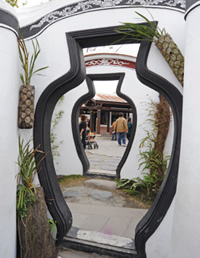
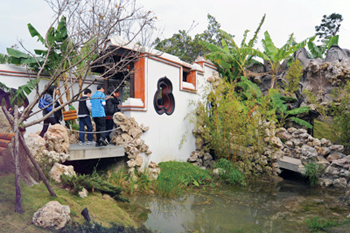
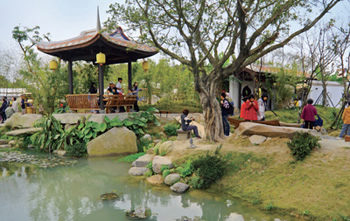
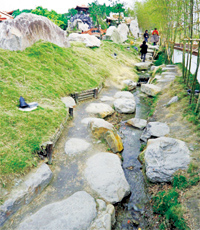
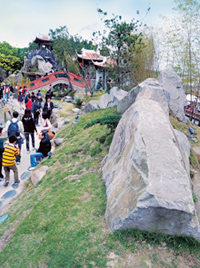
On top of the artificial hills with waterfalls is the small pavilion, or moon pavilion. At night, along with the stars and moon, they are reflected in pond to embody the natural scenery. This is so-called "View Borrowing" among landscape gardening.
View Borrowing
Sceneries of other areas are often adopted in the courtyard as background. It can be such as faraway mountains or buildings outside, clouds and birds in sky, fishes and lotuses in pond, stars and the moon at night and the changing seasons, whereby to extend the spatial layers for the courtyard, enriching the variation in sceneries
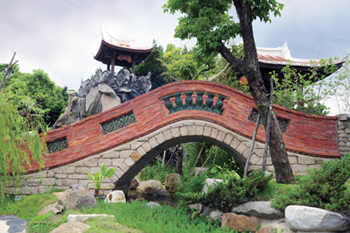
Obviously, this historical house builds a waterscape by setting the Moon Pond as a centerpiece in courtyard, moreover, pavilions, towers, boats and bridge to accompany it. In this way, the house can construct a wonderland for cultivating minds where is in accordance with Taoism.
View Blocking
By using the spatial contraction and shades, or utilizing various elements, the foreground can be blocked, thus creating the effect of exposure through concealment. This skill is often used in gateways between house, courtyard, and each zone, where one passing through is later surprised.
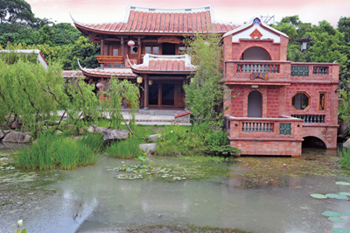
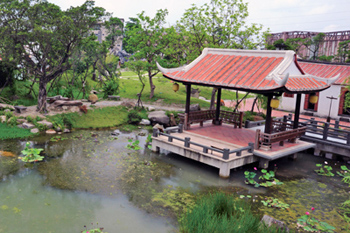
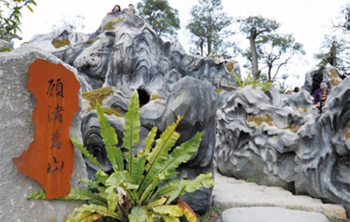

![Taiwan.gov.tw [ open a new window]](/images/egov.png)
